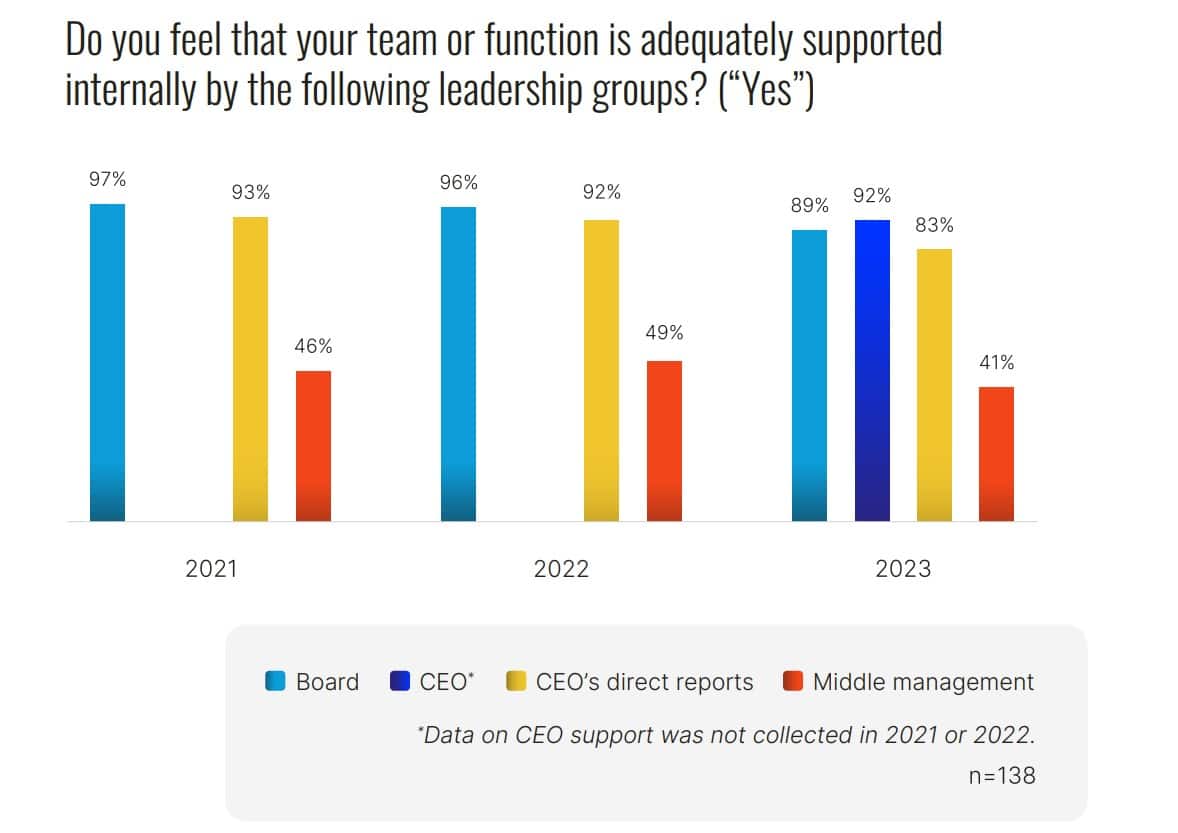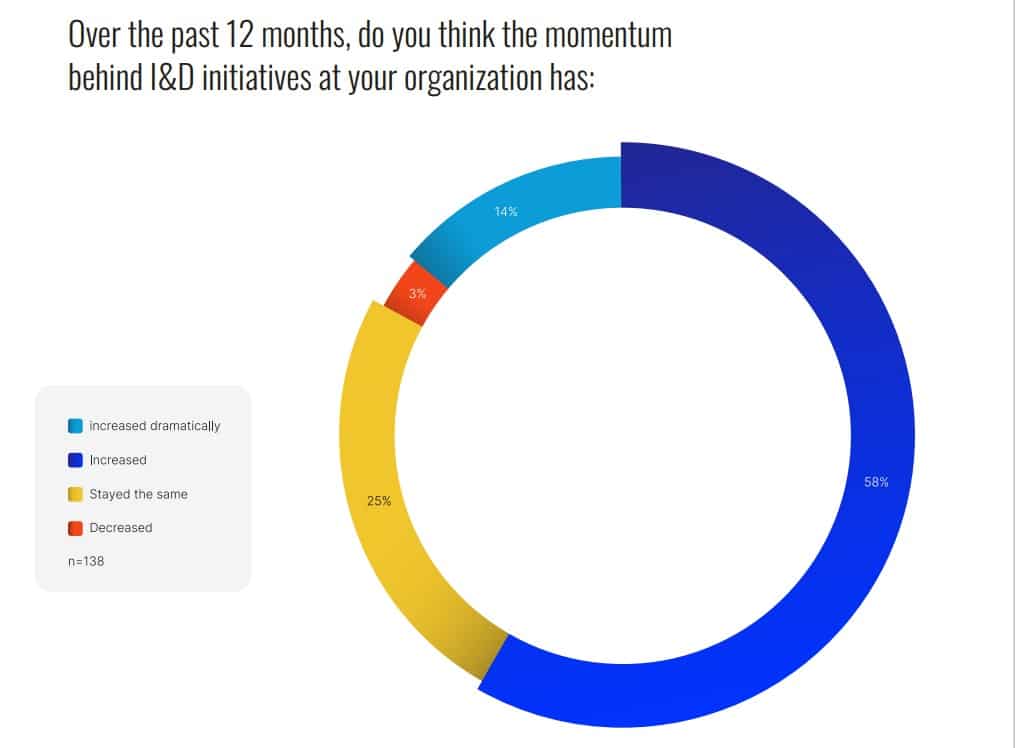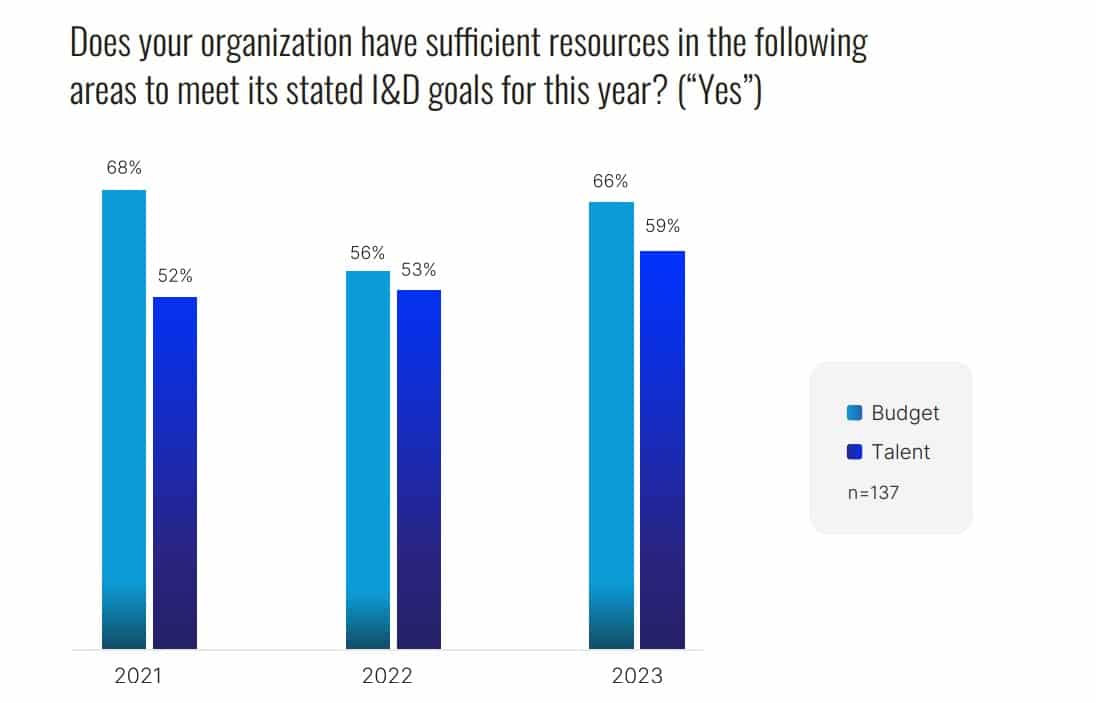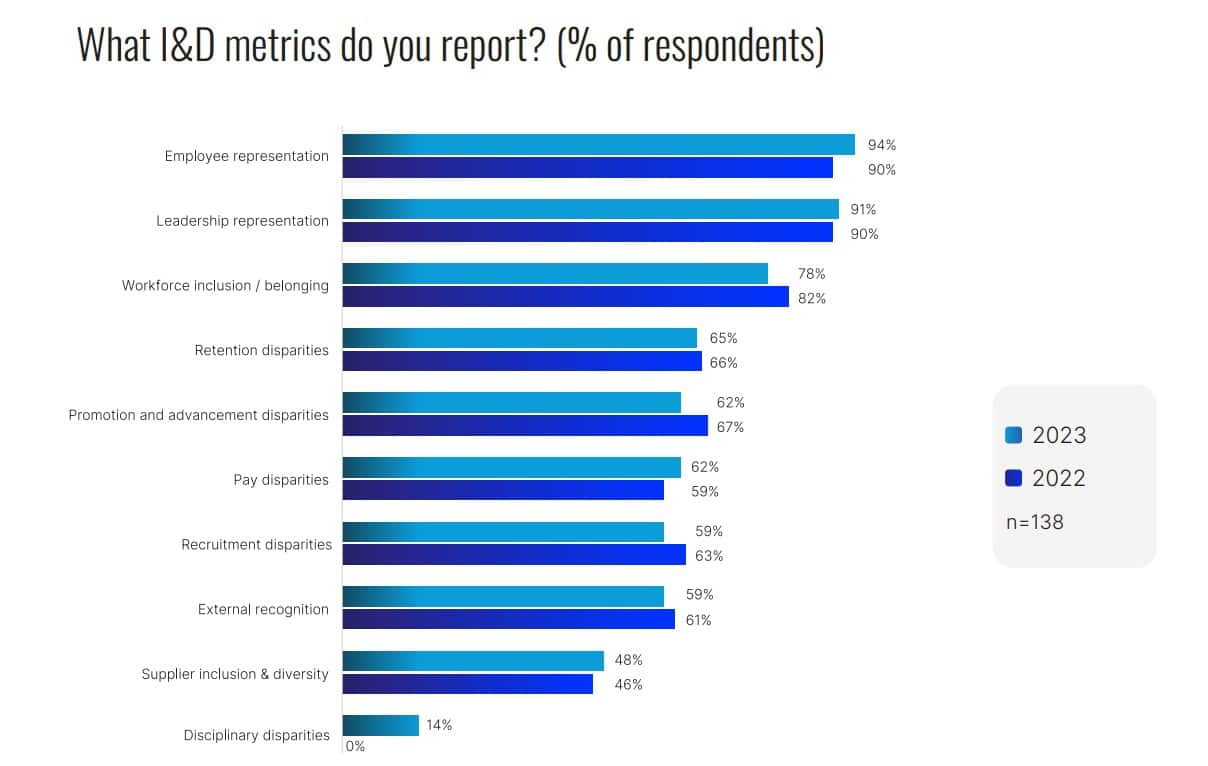Is diversity, equity, and inclusion (DEI) getting better in the business world? It seems to depend on who you ask, because recent reports have found that although business leaders say they’re committed to and investing in this key Purpose initiative, many employees say they haven’t seen any changes in their workplaces. New research from the global community of business leaders World 50 Group seems to have tracked down the disconnect.
The group’s third annual Inclusion & Diversity (I&D) Impact Report—which examines the perspectives of members from its executive community of senior-most leaders responsible for DEI—finds that, just as they claim, nearly three-quarters (72 percent) of leaders have increased their organization’s investment over the past 12 months, even despite today’s climate of economic and political uncertainty. Direct reports to the CEO were found most likely to feel they have access to sufficient talent as well as support from their board, CEO, and other C-suite leaders.
However, only 41 percent of respondents (a decline of 8 percent from 2022) said that middle managers were supportive. This clearly highlights the need for improvement in middle management support, those who oversee non-executive employees—the ones who say they’re not seeing anything changing.

“This year’s survey shows DEI investments are steadily rising, demonstrating both commitment and understanding among large businesses,” said Jennifer Bird Newton, World 50’s chief impact officer, in a news release. “However, continued focus, transparency, constant communication, and accountability are necessary for lasting I&D change.”
Momentum for DEI initiatives remains particularly strong in larger companies (above $50 billion in revenue) and is further validated by the 81 percent of leaders who said their DEI budgets had either stayed the same or increased during this period. This is a 15 percent increase from companies that said they had sufficient funding for such efforts in 2022. Another notable finding is that 59 percent of leaders also reported having sufficient talent to support their DEI initiatives, a 6 percent increase from the previous year.

The report—a strong barometer for the ongoing significance of DEI—offers additional insights, including the critical fact that companies are beginning to align on DEI measurement:
- 94 percent are tracking employee representation.
- 78 percent are measuring workforce inclusion and belonging, which is down by 4% from last year.
Other insights include:
- 26 percent of respondents who said they had seen an increase in momentum said it came from leadership pressure.
- 41 percent of those reporting directly to the CEO said their budgets had increased.
- 81 percent of respondents said their senior-most DEI leaders report either to the chief human resources officer (69 percent) or CEO (12 percent), compared to 59 percent and 19 percent, respectively, in 2022.

Growing concerns over backlash
Despite the increased momentum of DEI, a considerable proportion of respondents (22 percent) identified their initiatives as “low” on the maturity scale this year compared to prior years. This critical assessment of maturity reflects the confluence of social, political, and economic pressures—along with the U.S. Supreme Court ruling striking down affirmative action policies—which are increasingly bringing new scrutiny to the depth and breadth of corporate commitments.
While 62 percent of respondents said they do not think their leaders are effectively held accountable for DEI results, that number decreased to 53 percent among those who directly report to the CEO. These findings underscore the need to establish accountability measures from the top down—and their impact on driving lasting change.

“We are at a critical inflection point for DEI. What is evident is that those who are committed to this work are getting the support and resources they need to move forward,” said David Wilkie, CEO of World 50, in the release. “Building cultures of belonging takes time, and while there is still much work to be done, we are encouraged by the progress we continue to see.”








